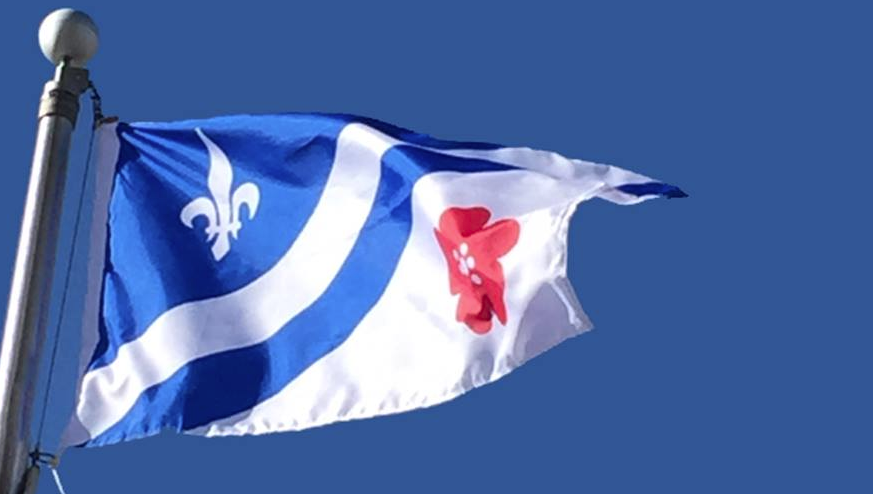The Franco-Albertan flag was designed in 1982. It was an initiative of Francophonie Jeunesse de l’Alberta who organized a contest to find an emblem for Alberta’s francophone community. The flag is the masterpiece of Jean-Pierre Grenier. It was officially unveiled on March 6, 1982, at the Congrès Annuel de l’Association Canadienne-Francaise de l’Alberta.
The blue represents Alberta’s population while the white signifies the francophone community. The two floral emblems, the wild rose and the fleur de Lys symbolize Alberta and the Francophonie respectively. The two diagonal bands that lay across the flag represent the roads and waterways that our ancestors commonly travelled to explore Western Canada.
According to the data on linguistics from the 2016 census by Statistics Canada, 88,220 Albertans have French as their first language, which constitutes an increase of 8.8% since 2011 and 28.9% since 2006. In addition, 268,640 Albertans can speak and hold a conversation in French, comparatively to 2011 when this was the case for 238,770 Albertans.
On June 14, 2017, the Government of Alberta adopted the first French Policy in which it recognizes “the economic, cultural and social contributions that Alberta’s French-speaking population has made and continues to make for the province.” The policy also introduced the Franco-Albertan flag as the emblem of the francophone cultural group, symbolizing their distinction and their contribution to Alberta’s diversity (the first under the Emblems of Alberta Act).
Since 2009, the network of the ACFA coordinates Franco-Albertan flag-raising ceremonies for everywhere in the province on the first Friday of March annually. Under the slogan “Le ciel sera bleu, blanc, rose!” which translates to “The sky shall be blue, white and rose!”, ceremonial protocol is to highlight the past and present contributions of the dynamic and vibrant francophone society rooted throughout Alberta.
In each region, the ceremonies include the raising of the Franco-Albertan flag, speeches from distinguished guest speakers, a national anthem and serval locally produced surprises. Francophone and French immersion schools are invited to participate in the events that take place across the province in order for students to live and build their own francophone identity and share their passion for the French language. The Franco-Albertan flag is an important symbol of our Francophonie, therefore the flag-raising ceremonies are the excellent opportunity to celebrate and demonstrate our francophone pride.

